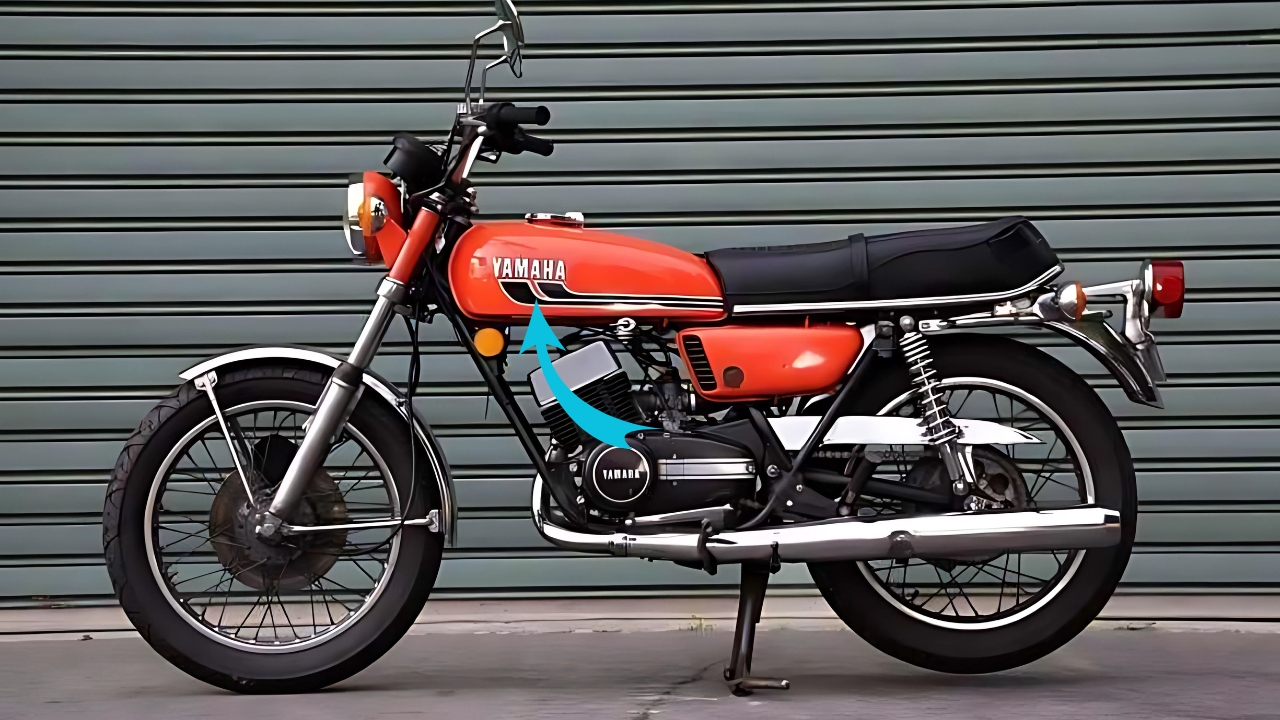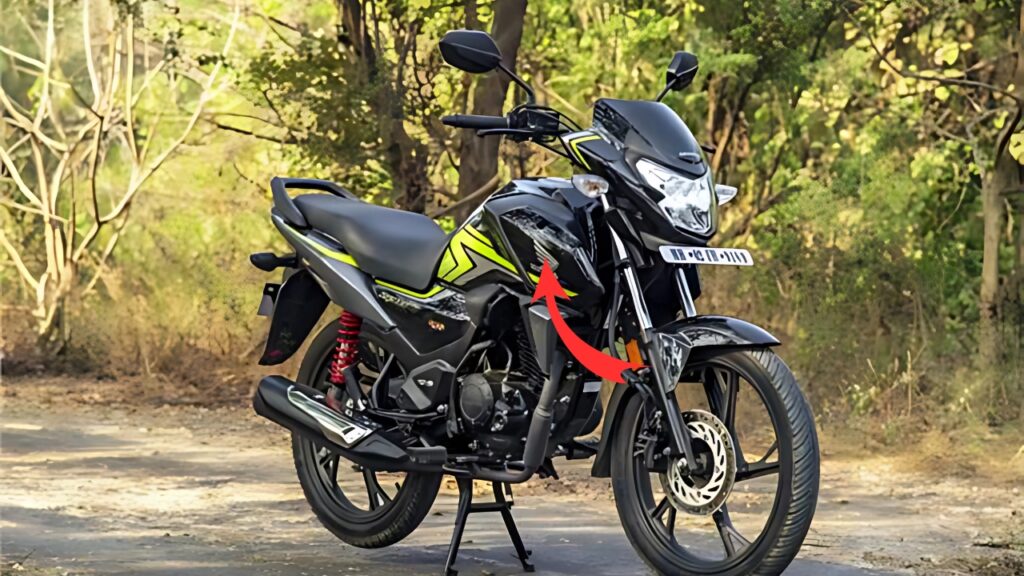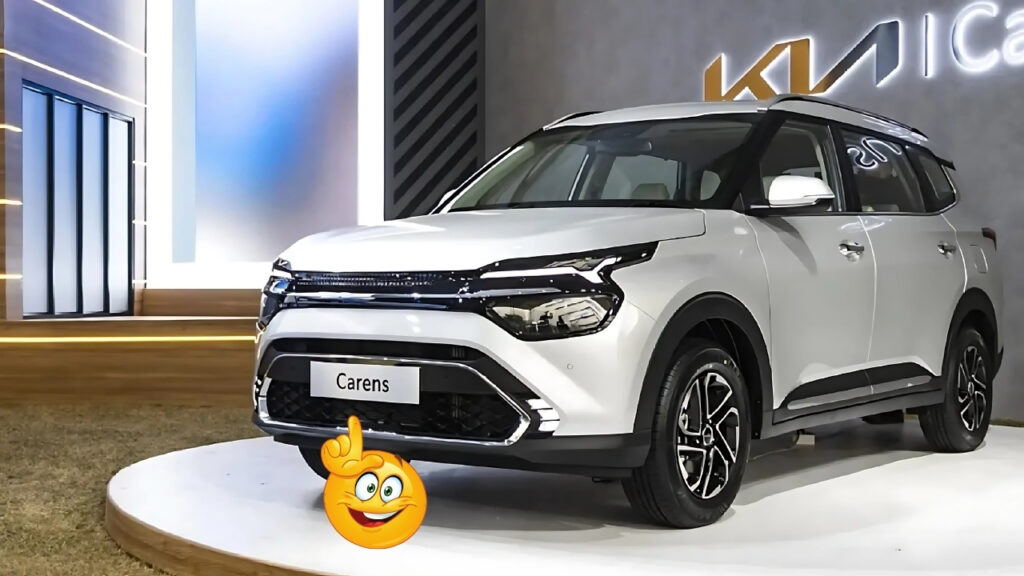Yamaha RD 350: How did a kit from Japan become a legendary motorcycle in India? Known for its agri machines and the famous Rajdoot bikes, Escorts made the bold move of bringing Yamaha’s globally successful two-stroke to the Indian market.
Unlike most of the era’s technology transfers, which involved old or watered-down designs, the RD was contemporary performance motorcycling largely as-directed.
The beauty of this introduction was its timing, a period when the Indian market placed economy and reliability above everything else.
With power numbers that would go unmatched for years, the RD 350 was a radical departure from the norm, delivering performance few riders had experienced outside of a motorsport environment.
Table of Contents
Yamaha RD 350: Engineering Excellence

A 347cc air-cooled, two-stroke parallel-twin makes up the RD 350’s powerplant—very much unlike anything else you could get in the country, and thus its mystique.
Yamaha’s groundbreaking reed valve induction system and oil injection instead of premix fueling were technical sophistications nearly unheard of in the Indian market in the early 1980s.
The Indian RD was available in two key iterations. The first HT for “High Torque” model was a relatively modest 27 horsepower compared with its international cousins,
while the later LT for “Low Torque” version dropped output further to around 22 horsepower for increased fuel economy and reliability. But these detuned figures still represented nearly twice that of most contemporary alternatives.
But more than just raw performance numbers, it was the engine’s character that defined the RD experience.
The unique power delivery—relatively tame under 4,000 RPM, then an explosive rush of acceleration as the engine entered its sweet spot—produced a riding experience unlike anything else on sale.
This trait demanded the skill to master, but rewarded riders with an exhilaration that enthusiasts still benchmark decades on in discussions over two-stroke power delivery.
The six-speed gear box, rare for the time in India, had well-matched ratios that helped keep the engine in its powerband.
It had an oversimplified chassis by today standards, a tubular steel frame and a conventional suspension, but this ensured that the handling matched the performance potential of the engine under proper setting and didn’t render the car an underpowered equivalent of a top-fuel dragster pushed into an inadequate frame.
Cultural Impact
The RD 350 had an impact beyond mere specs and the motorcycle became ingrained in the developing performance motorcycling scene in India.
It was a critical period, as the country’s motorcycle marketplace was just starting to give way to gradual change, transitioning from a place for strictly utilitarian transportation to one where recreational and lifestyle considerations were increasingly at play.
The RD catalyzed this evolution in spectacular fashion, establishing a reference point for what performance motorcycling could be.
For many fans, particularly in urban centers, the RD 350 was their first taste of real fast bikes. Capability to reach 100 km/h in about 7 seconds, and top speeds of almost 160 km/h, seemed almost extraterrestrial in comparison to the options.
This performance envelope instilled both respect and intimidation, leading to the motorcycle’s famed “Race Derived” nickname, while also spawning the less flattering “Rapid Death” monicker among those more fearful of its power.
Its relative rarity only added to this reputation. Limited by both manufacturing capacity and its premium pricing, the RD 350 was never a common sight even during its production years.
And its rarity, combined with its unique exhaust note and acceleration potentials, made sure it turned heads every time it showed up.
Maybe most importantly, the RD 350 became a divisive touchstone for Indian motorcycling—a sea change that set an eternally new benchmark.
Even motorcycles introduced decades later could be compared to the RD’s performance and character, a hallmark of its lasting impression on the enthusiast community’s collective consciousness.
Legacy and Current Status
The RD 350 was no longer in production by the late eighties but the effect of it continued to grow. With that the significance of the pioneering RD started gaining new appreciation amongst younger generations of enthusiasts who never had the opportunity to own one while it was in production, as India slowly adopted higher displacement performance oriented machines during that period.
This ever-increasing appreciation has turned the RD 350 from just another old motorcycle into a priceless collector’s item.
Good ones now bring multiples of what they originally cost, even after inflation, market behavior often reserved for headline-grabbing exotic cars, not mass-produced motorcycles.
Specialized restoration wizards will go through these machines with a fine tooth comb, getting everything back up to spec with period-correct looks and, in some cases, subtle modern advances for the best possible driving experience.
What keeps this ongoing interest especially interesting is that it goes way beyond typical vintage vehicle enthusiasm.
This brings us full-circle to the appeal of the RD 350—like the original owner recalls what it was like when he owned one new, another part of its fan base is filled with enthusiasts who aren’t even alive in the production years of the motorcycle.
That cross-generational appeal suggests something deeper than mere nostalgia, a recognition of the motorcycle’s authentic character that still feels relevant despite (and perhaps because of) nine decades of radical technological advancement in the time since.
The Riding Experience
Caring about the RD 350 comes down to understanding the particular kind of ride you can get from it.
Unlike modern motorcycles with linear power delivery, sophisticated electronics, and refined behavior, the RD needs an active rider input and offers feedback through all sensory.
That signature two-stroke soundtrack — a unique ring-ding at idle that then soars into banshee shrieking at higher revs — produces an auditory experience that a four-stroke engine can’t come close to matching.
Sure, the two stroke exhaust smell is environmentally questionable, and it triggers warm memories and excitement among enthusiasts with the recognition it brings.
The forward thrust of the physical feeling of the powerband hitting offers visceral acceleration that is more robust than the hard figures led you to believe.
These sensory factors merge with the direct, unfiltered link between rider inputs and vehicle responses that is a hallmark of the motorcycle experience to create a visceral engagement that’s becoming gem rare in this age of electronic mediation.
The RD 350 requires a bit of skill to ride well, and goes on to reward those developed skills by creating a uniquely involving partnership between man and machine.
Yamaha RD 350
As motorcycles continue their technological evolution with electrification and greater computerization, the RD 350’s dirt-cheap charm should persist, if only because the qualities that may seem plain as limitations through a contemporary lens.
Its analog approach, the mechanical empathy it demands and the unmediated thrill it serves up are values becoming increasingly scarce in today’s cars.
For even future generations of Indian motorcyclists, the RD 350 will probably remain, for better or worse, both a historical milestone and a visceral tie to another era of performance—one where providing engagement and character was prioritized over maximum capabilities or utility.
In this respect, its importance goes beyond its specifications or production numbers to embody an ethos of motorcycling that remains singular, relevant even as technology marches on.





